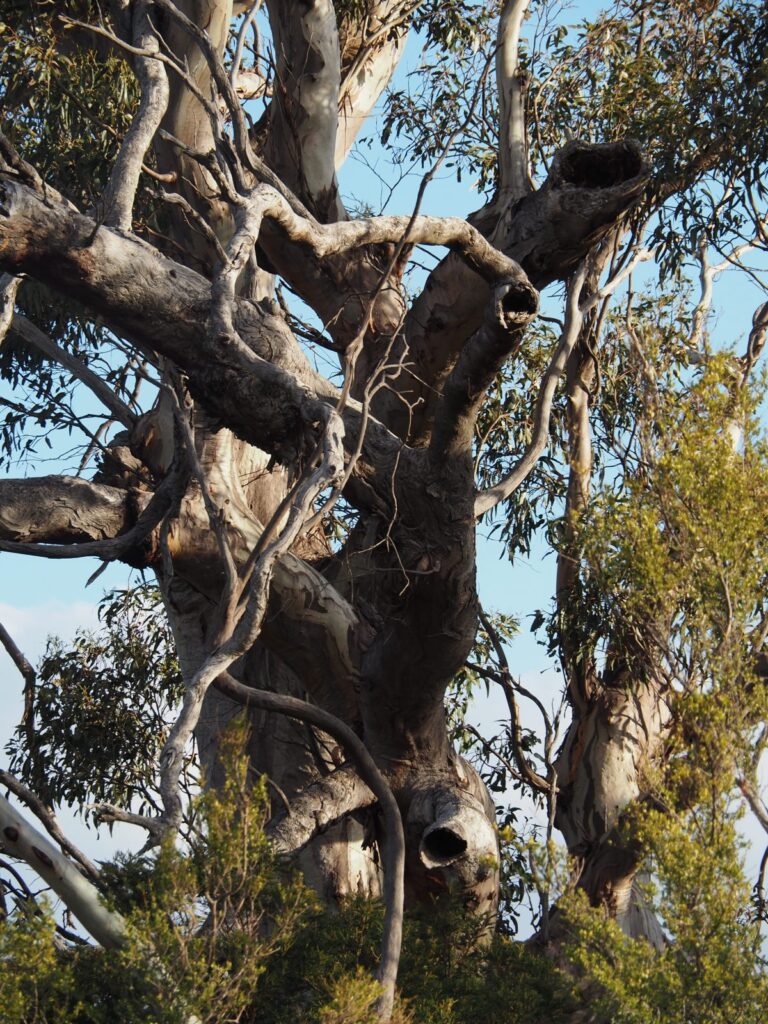Hello Hollows!
As part of 2019 Threatened Species Day activities at Tramway Hill Reserve in Margate, Kingborough Council launched a new brochure “Tree Hollows – a home to suit every need” detailing the importance of tree hollows in the landscape. Forty-two Tasmanian vertebrates and a vastly greater number of invertebrates rely on hollows for survival.
Sadly hollow-bearing trees are under threat and good hollows are now rare in the landscape. Tree hollows take a long time to form, usually more than 150 years. Many species that use tree hollows have now been listed as threatened.
The Kingborough brochure has been based with permission on the booklet “Tree Hollows in Tasmania – A Guide” published by the Forest Practices Authority. It details how you can manage your property in a way that retains trees that contain hollows, whilst also considering safety concerns. It showcases some innovative ways that this is being done around the state and gives landholders some ideas that could work on their own properties.
Hollows take a long time to form and are the result of a range of processes that can include; physical damage (such as wind thrown branches), fire, and the activity of fungi and invertebrates (e.g. termites and beetles). In Australia, some species of animals (e.g. cockatoos) can help enlarge hollows, but no species builds hollows from scratch. Instead, hollows are produced by initial damage followed by environmental processes. Young and healthy trees can quickly heal after damage. As trees age they become slower at healing, allowing hollow-formation to progress. Termites and beetles can bore into the wood and hollow out extensive areas. Wounds provide entry points for fungal spores that can lead to active decay, which eventually rots out the tree.
One of the best ways of telling if a hollow is a good one is if it has previously been or is currently being used by animals.
Animals usually prefer hollows with an entrance just slightly larger than their body size. Deeper hollows are more likely to be used. The main exception to this is when the entire trunk is hollow, although even these hollows can be used by bats. A wide variety of hollow shapes can potentially be used by an animal, if the hollow is of the right size and in the right place. Hollow shapes that can be used include, but are not restricted to: large jagged openings in the dead tops of trees, small round hollows in the trunk, the broken off end of branches, big jagged tears and small cracks. Hollows can be found anywhere from the base of the tree to the small branches near the tree top. Branches need to be large enough to contain a hollow big enough to house an animal. While some animals prefer a certain height above the ground, hollows at any height may be used.
One of the best ways of telling if a hollow is a good one is if it has previously been or is currently being used by animals. Evidence of current or previous use includes, but is not limited to: rubbing or chewing marks around the hollow entrance, splash marks or droppings at or near the hollow entrance, extensive scratch marks leading up to the hollow, visible nesting material inside the hollow, or an animal observed inside or entering the hollow!
Within a particular area or forest type, the larger a tree is around the base, the older it is likely to be and the more likely it is that the tree will have a hollow. As hollow formation often follows the falling of dead branches, the more dead branches and the bigger the dead branches you see in the canopy of a tree, the more likely the tree is to have a hollow. Dead wood in the canopy of a tree generally means that the tree has experienced some stress. Stressed trees do not heal as readily as healthy trees and therefore hollow formation is more likely.

Older trees should be retained in an area whenever possible. Instead of targeting older hollow-bearing trees for firewood collection, target younger trees (always ensuring enough recruitment trees are retained). Think twice before removing paddock trees. Hollow-bearing trees can also require protection, as they can be structurally less sound than trees without hollows, making them more prone to wind throw. The chances of wind throw can be reduced by retaining other trees around the hollow-bearing trees, or planting additional trees and shrubs around hollow-bearing trees.
Although fire can help enlarge hollows created by other processes, it can also destroy them, both as a result of wild fires but also from controlled or planned burns. When the base of an old tree is exposed to fire, that fire can easily be carried up to the hollow-bearing regions of the tree by the fibrous bark or the lower internal cavity acting as a chimney. This can be avoided by clearing fuel away from a buffer zone around the base of the tree.
Nest boxes can be used to provide artificial tree hollows, especially in areas where other habitat requirements are in abundance but old hollow-bearing trees are lacking. The size and design of the box will influence which species may be able to use it. There are however potential issues with nest boxes including: rapid deterioration outdoors, lack of insulation, potential need for regular cleaning and potential to be used by introduced or pest species.
Because tree hollows take such a long time to form, it is important to think about how hollow availability will change in our landscape over time. Recruitment trees are trees which may not provide a hollow now, but which will probably do so in the future if retained. Good recruitment habitat trees are those from the age cohort younger than the hollow-bearing trees, but that are of reasonable size and have the capacity to survive, grow and develop hollows over time.
For more information check out the Kingborough Council Brochure or the Tree Hollow Guide published by the Forest Practices Authority.
‘Hello Hollows’ was originally published in The Running Postman (Newsletter of the Private Land Conservation Program), December 2019 Issue 28, DPIPWE.
Banner photo: Dave James




